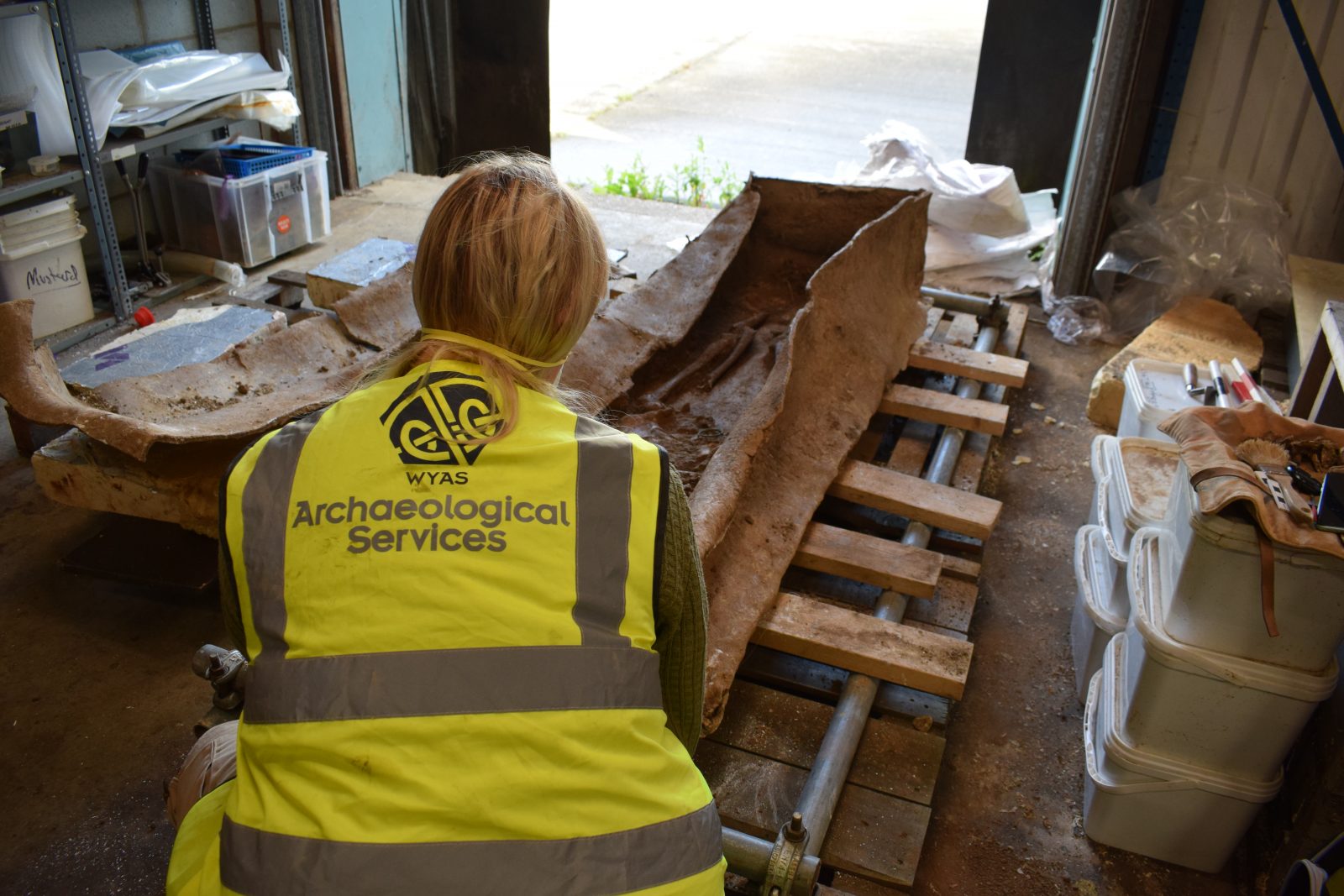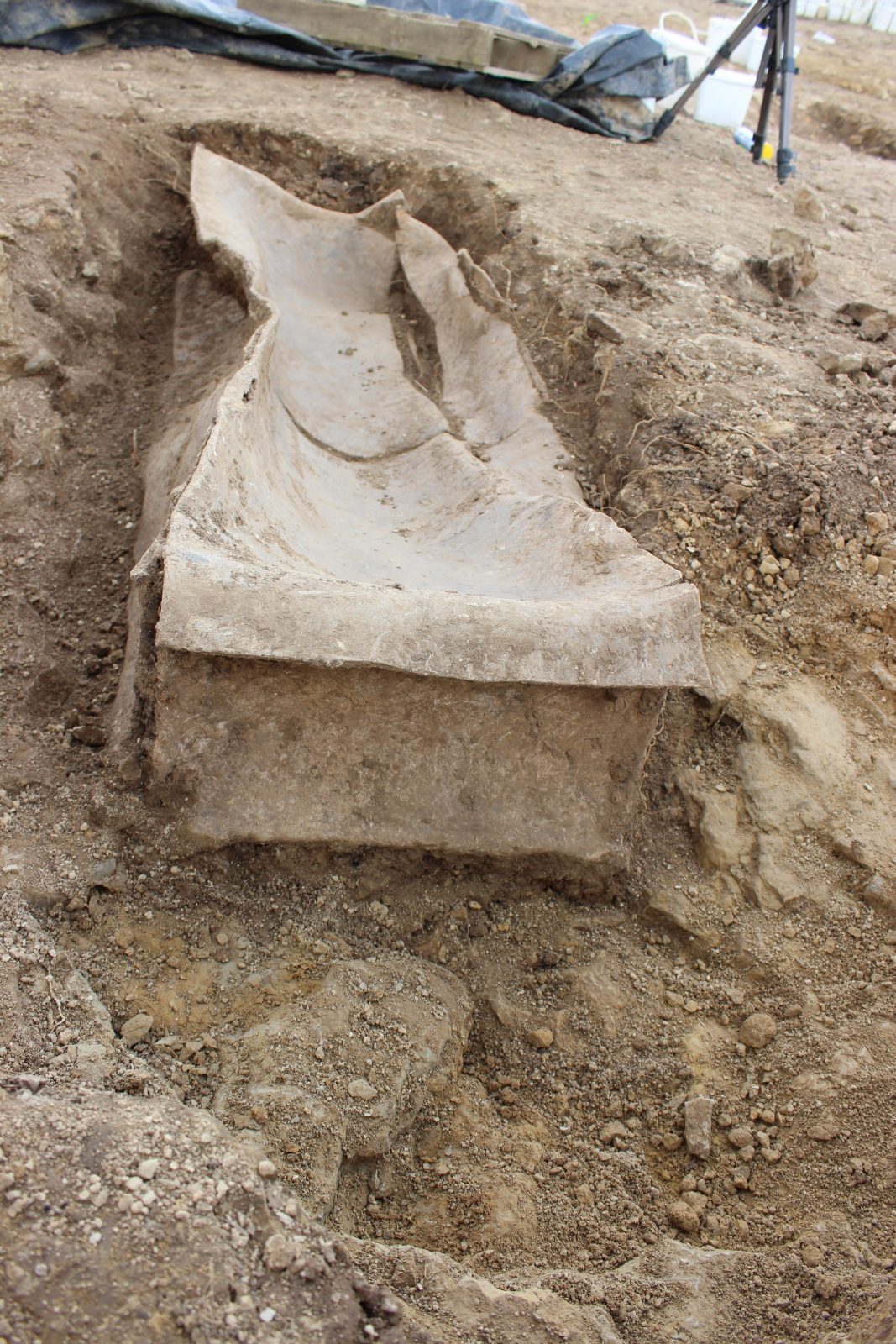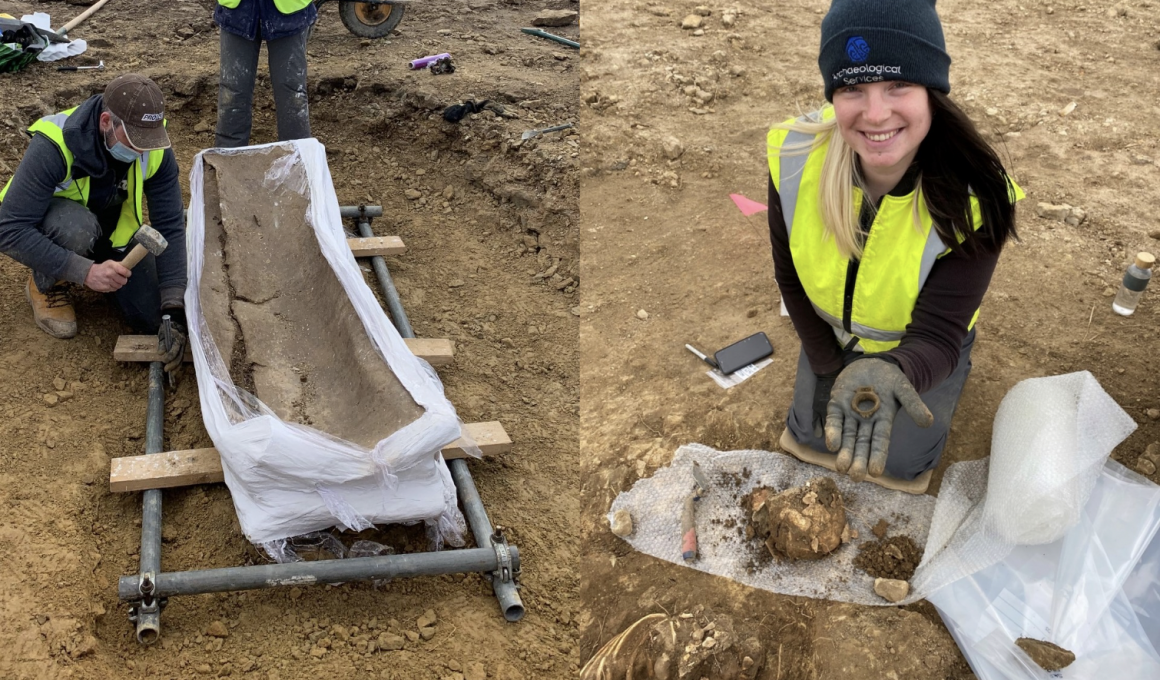An ancient lead coffin has been discovered in an extraordinary 1,600 year old cemetery near Garforth in Leeds.
It is believed that this previously undiscovered cemetery could help to unlock the dark secrets of one of the most significant periods in British history.
This incredible find was part of an archaeological dig near Garforth in Leeds and is thought to contain the remains of a late-Roman aristocratic woman.
The dig also revealed the remains of more than 60 men, women and children who lived in the area more than a thousand years ago.

It’s thought that those buried in the cemetery with her include both late-Roman and early-Saxon people as burial customs from both cultures were found in different graves.
Archaeologists now hope this means the site can help them chart the largely undocumented transition between the fall of the Roman Empire in around 400AD and the establishment of the famed Anglo-Saxon kingdoms.
Thorough and expert analysis of the site will now take place, including carbon dating to establish precise timeframes as well as detailed chemical tests that can determine extraordinary details such as ancestry and individual diets.
View this post on Instagram
Kylie Buxton, on-site supervisor for the excavations said: “It is every archaeologist’s dream to work on a ‘once in a lifetime’ site, and supervising these excavations is definitely a career-high for me.
“There is always a chance of finding burials, but to have discovered a cemetery of such significance, at such a time of transition, was quite unbelievable. For me it was a particular honour to excavate the high-status lead coffin burial, but it was a great team effort by everyone involved.”
Once analysis of the findings has taken place, it is hoped the lead coffin can be displayed in an upcoming exhibition at Leeds City Museum which will explore death and burial customs from acound the world.

Councillor James Lewis, leader of Leeds City Council and member of the West Yorkshire Joint Services Committee, said: “This is an absolutely fascinating discovery which paints a captivating picture of life in ancient Yorkshire.
“It’s also an incredible reminder of the history and heritage which exists beneath our feet, and we look forward to hopefully playing our part in telling this story to visitors to the museum.”
Read more: The fascinating history behind why people from Leeds are called Loiners
Feature image – Leeds City Council / West Yorkshire Joint Services







